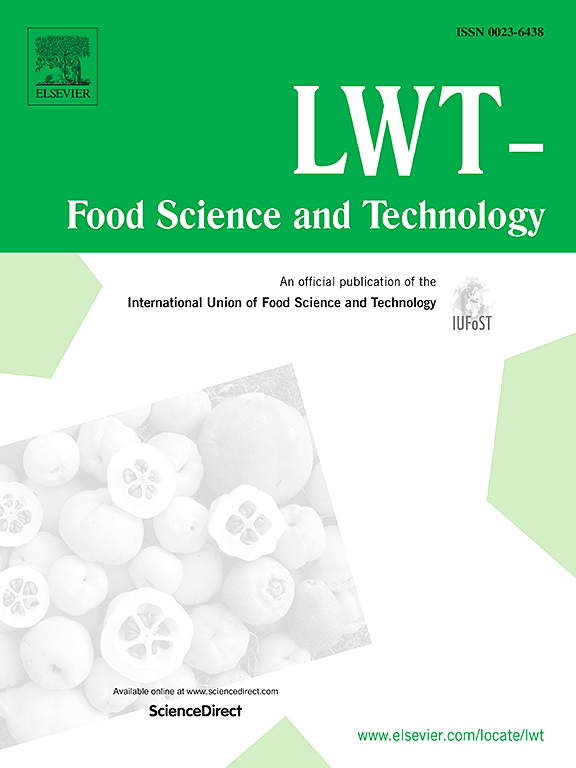通过优化储粮臭氧吸附,提高杀虫效果和粮食品质
IF 6
1区 农林科学
Q1 FOOD SCIENCE & TECHNOLOGY
引用次数: 0
摘要
臭氧(O3)熏蒸是一种安全、可持续的储粮害虫防治方法,但其效果受到粮食吸附、臭氧生物利用度降低的影响。本研究采用响应面法系统研究了小麦、玉米和水稻在不同温度(15-35℃)、水分(12.5 - 16.5%)和臭氧浓度(200-500 ppm)条件下对臭氧的吸附。水分含量是影响臭氧吸附的主要因素,其次是颗粒温度和臭氧浓度。小麦臭氧吸附最小的最佳条件为18.3℃、13.0%的含水率和471 ppm;19.2°C, 12.5%水分含量,玉米486ppm;17.1°C, 12.7%的水分含量和436 ppm的大米。优化后的条件显著降低了臭氧吸附,提高了对褐曲霉的杀虫效果,降低了对臭氧吸附较高的水稻的LT50和LT99值。此外,优化的臭氧熏蒸有效地减少了微生物污染,同时保留了关键的质量参数,包括发芽率、营养完整性和最小的脂质氧化。本研究强调了吸附控制在臭氧熏蒸中的关键作用,为促进臭氧熏蒸在粮食储存系统中更有效和广泛的应用提供了策略。本文章由计算机程序翻译,如有差异,请以英文原文为准。

Enhanced insecticidal efficacy and grain quality through optimized ozone adsorption in stored grain
Ozone (O3) fumigation is a promising fumigant as a safe and sustainable alternative for stored grain pest control, but its efficacy is hindered by grain adsorption, reducing ozone bioavailability. This study systematically investigated ozone adsorption in wheat, maize, and rice under varying conditions of grain temperature (15–35 °C), moisture content (12.5–16.5 %), and ozone concentration (200–500 ppm) using response surface methodology. Moisture content emerged as the predominant factor influencing ozone adsorption, followed by grain temperature and ozone concentration. The optimal conditions for minimizing ozone adsorption were 18.3 °C, 13.0 % moisture content and 471 ppm for wheat; 19.2 °C, 12.5 % moisture content and 486 ppm for maize; and 17.1 °C, 12.7 % moisture content and 436 ppm for rice. Optimized conditions significantly minimized ozone adsorption, enhancing insecticidal efficacy against Tribolium castaneum, reducing LT50 and LT99 values, particularly in rice, which showed high ozone adsorption. Furthermore, optimized ozone fumigation effectively decreased microbial contamination while preserving critical quality parameters, including germination percentage, nutritional integrity, and minimal lipid oxidation. This study highlighted the crucial role of adsorption control in ozone fumigation and provides a strategy for facilitating the more effective and widespread application of ozone fumigation in grain storage systems.
求助全文
通过发布文献求助,成功后即可免费获取论文全文。
去求助
来源期刊

LWT - Food Science and Technology
工程技术-食品科技
CiteScore
11.80
自引率
6.70%
发文量
1724
审稿时长
65 days
期刊介绍:
LWT - Food Science and Technology is an international journal that publishes innovative papers in the fields of food chemistry, biochemistry, microbiology, technology and nutrition. The work described should be innovative either in the approach or in the methods used. The significance of the results either for the science community or for the food industry must also be specified. Contributions written in English are welcomed in the form of review articles, short reviews, research papers, and research notes. Papers featuring animal trials and cell cultures are outside the scope of the journal and will not be considered for publication.
 求助内容:
求助内容: 应助结果提醒方式:
应助结果提醒方式:


